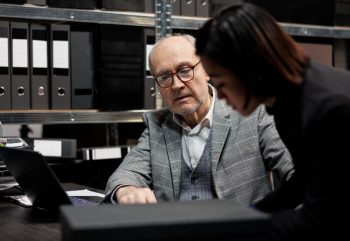Understanding the Role of a California Criminal Defense Lawyer
Facing criminal charges is one of the most serious challenges a person can experience. The consequences of a criminal conviction....
11 Views

Self-driving vehicles are becoming increasingly prevalent on the roads each year. Seeing driverless cars was once a novelty. Now, especially in urban environments, autonomous vehicles are much more common.
While these advanced automobiles have built-in safety mechanisms, there is no guarantee that they will be error-free while driving. The question a person injured in a collision with an autonomous vehicle will likely ask themselves is: How is liability determined in an autonomous vehicle accident?
While every car accident case comes with its fair share of obstacles, an autonomous vehicle accident case is especially tough. In a traditional car accident, a driver is typically found at fault for causing the incident. When an accident occurs with an autonomous vehicle, the question is whether the individual is at fault or the manufacturer is responsible.
If you’re injured in an accident involving an autonomous vehicle, a car accident law firm can help determine who may be held liable.
Oftentimes, liability in a car accident is determined only after an insurance company speaks to the insured driver and the other drivers involved. This way, the insurance company can gain a fuller perspective into what occurred before, during, and after the accident before officially accepting fault.
When only one driver is involved in a multi-car accident, the question of proceeding with a liability determination may be quite different. Instead, insurance companies may review information stored in the autonomous vehicle’s electronic control module. This module is also referred to as the black box.
Car manufacturers are also in a potentially difficult position if one of their autonomous vehicles is found to be at fault for having injured another person. A manufacturer who produces a model that has a defect is held responsible for issues that arise from that defect. This may also be how an autonomous vehicle is treated if an accident occurs due to a problem with it.
No matter which entity —insurance company or vehicle manufacturer —stands in a position to accept liability for an accident, neither will be overly eager to pay a person for their injuries, lost wages, or other damages. It is the hallmark of many car accident cases that the insurance company will delay accepting fault, and eventually do so only after a great deal of pressure is applied by the injured party.
If you have been injured in a car accident involving an autonomous vehicle, it is crucial to advocate for your rights.
Manufacture defects and design problems are especially important to consider and investigate for collisions involving autonomous vehicles. Manufacturers are legally bound to ensure their cars are safe. As models involve more complex systems now than ever before, there is even more of an emphasis placed upon manufacturers ensuring that the vehicles they produce are without a design or manufacturing flaw.
Autonomous vehicles rely heavily on technologies such as radar and cameras to detect other vehicles. Even non-autonomous cars utilize similar technologies. When these electronic systems fail, collisions may occur. Depending on the type of issue that led to the system failure, an injured party may be able to file a lawsuit against the manufacturer.
Even so-called “autonomous” vehicles still require some degree of human involvement while driving. When a situation on the road becomes challenging for the autonomous car, the person overseeing it must step in to remedy the problem. This typically involves them physically taking command of the vehicle’s operation.
A malfunction can affect many systems that are intended to work together, causing them to stop functioning in harmony. Software and mechanical components are among the most pertinent systems for an autonomous vehicle, and even a minor glitch or wear can wreak havoc. There are product liability laws in Pennsylvania that protect people injured due to the actions of an autonomous vehicle.
Difficult questions will arise for drivers injured in accidents involving autonomous vehicles. First, which party owed the hurt driver a duty of care? The car manufacturer, the human observer of the vehicle, or even a company that installed particular software may be found responsible for the person’s injuries.
The final two questions relevant to liability in a self-driving vehicle scenario involve who ultimately breached the duty of care and if the injuries were caused by a defect or technology issue in the autonomous vehicle. When it comes to complex questions like these, having an experienced car accident attorney available for guidance and support is essential to achieving the best possible outcomes.
A self-driving vehicle accident means that an injured party must take certain steps to protect their rights. Being able to seek compensation for their injuries depends largely on a party’s actions immediately following the motor vehicle accident.
Seeking medical attention is essential for determining the extent of injuries suffered. In some circumstances, injuries can remain hidden for hours or even days after an accident. Receiving proper treatment for those injuries after the accident can help avoid unnecessary worsening or exacerbation of a condition.
At the scene of the accident, gathering as much information as possible is essential. Photographs and videos of the road conditions, vehicles, and injuries are important evidence in a car accident claim. If a person’s injuries are too significant to document the scene of the accident, contact a trusted person to arrive at the scene for documentation purposes.
If the self-driving vehicle has a human operator on board, be sure to exchange information with them. When no human is present, photograph any identifiable information on or within the vehicle so that you can begin to determine who is the responsible party for the self-driving vehicle.
Ankita Tripathy loves to write about food and the Hallyu Wave in particular. During her free time, she enjoys looking at the sky or reading books while sipping a cup of hot coffee. Her favourite niches are food, music, lifestyle, travel, and Korean Pop music and drama.
View Post
Facing criminal charges is one of the most serious challenges a person can experience. The consequences of a criminal conviction....

Launching a new law firm is exhilarating. The name on the door, the first clients walking through, the business cards....

So, you’ve been charged with something in Atlanta. It is normal to panic in the first place. The justice system....